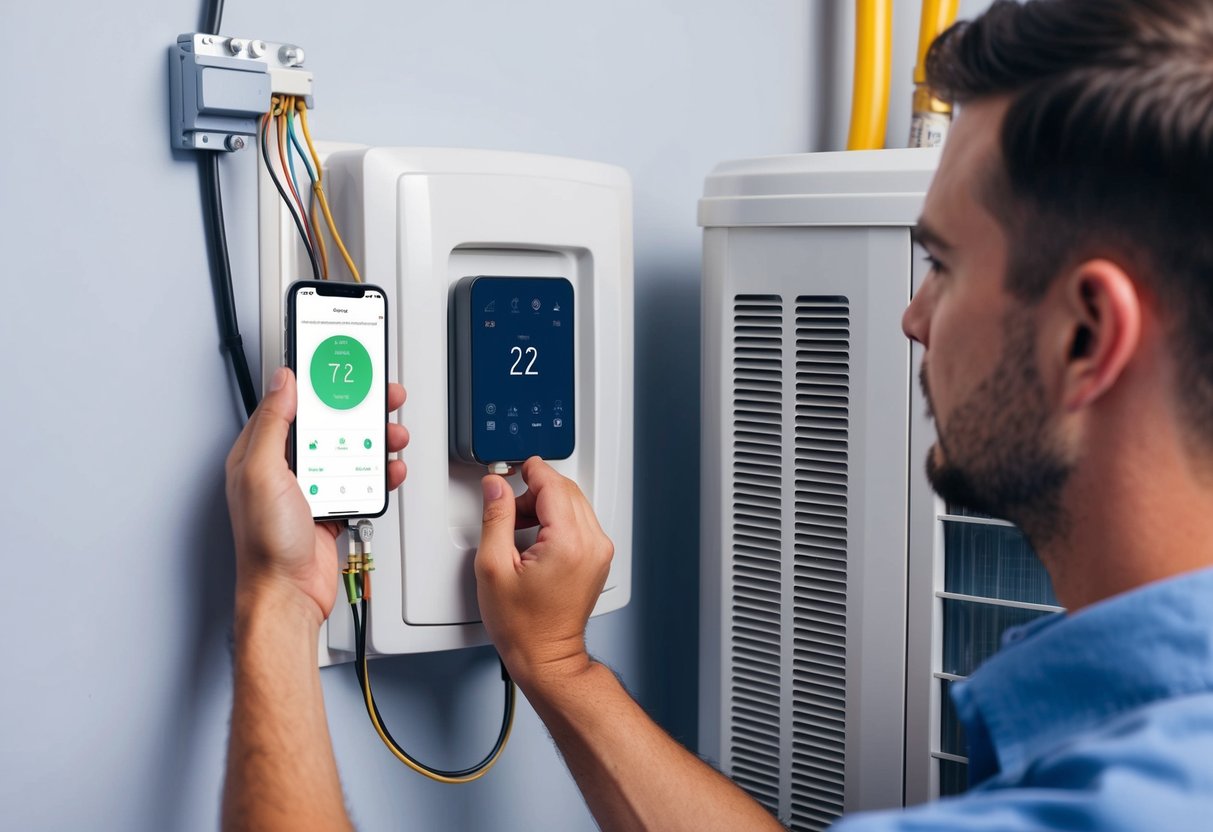Smart Thermostat Installation: Guide to a More Energy-Efficient Home
A smart thermostat offers a way to enhance energy efficiency in any home. By automatically adjusting the heating and cooling settings based on the homeowner’s schedule and preferences, it reduces unnecessary energy consumption. Installing a smart thermostat can lead to substantial savings on energy bills and a reduced carbon footprint.
These devices are equipped with advanced sensors and Wi-Fi connectivity, which allow for remote control via smartphones. This ensures homeowners can monitor and adjust their home’s temperature settings from anywhere. A smart thermostat not only contributes to financial savings but also promotes environmentally conscious living.
The combination of technology and practicality makes smart thermostats an appealing choice for those looking to update their home systems. With straightforward installation and compatibility with most HVAC systems, they represent a forward-thinking step towards a greener future.
Understanding Smart Thermostats
Smart thermostats are essential components for those looking to optimize energy efficiency in their homes. They offer advanced features that adapt to the user’s lifestyle and preferences, significantly reducing energy consumption compared to traditional thermostats.
Benefits of Upgrading
Switching to a smart thermostat can lead to substantial energy savings. Many models are equipped with sensors and algorithms that learn a household’s schedule and temperature preferences, adjusting accordingly to minimize energy usage without sacrificing comfort.
Features like remote control through a smartphone app allow users to adjust settings even when away from home. Integration with a Smart Home ecosystem enables seamless interaction with other devices, enhancing overall home automation and convenience.
Cost savings on utility bills can be significant with a Wi-Fi Smart Thermostat. Numerous studies demonstrate that upgrading can decrease heating and cooling costs by about 10-15%. These thermostats provide detailed energy reports, helping homeowners identify opportunities to enhance efficiency further.
How Smart Thermostats Work
Smart thermostats function by connecting to a home’s Wi-Fi network, allowing remote access and control. They are distinct from standard Programmable Thermostats in their ability to learn and adapt to usage patterns over time.
Equipped with sensors and machine learning capabilities, they adjust heating and cooling systems based on occupancy and preferences. Many models include geofencing technology, which detects when the homeowner is approaching and adjusts settings to ensure optimal comfort upon arrival.
Integration with voice assistants adds another layer of convenience, enabling verbal commands for temperature adjustments. These systems often provide real-time data and insights into energy usage, empowering homeowners to make informed decisions about their consumption habits.
Assessing Your HVAC Compatibility

Installing a smart thermostat is a great way to enhance energy efficiency. To ensure it works seamlessly, it’s crucial to understand your current HVAC system’s compatibility, focusing on the availability of a C-Wire and knowing your system type.
C-Wire Explained
A C-Wire, or common wire, delivers continuous power to your smart thermostat. It’s an essential component for many models, ensuring that all features operate effectively without depleting the battery. Not all older homes have a C-Wire, which can create a challenge when installing a new device.
For homes lacking this wire, using a C-Wire adapter can be a practical solution. These adapters provide the necessary connection between the thermostat and the HVAC system. It’s important to check your system’s wiring to determine if an adapter is necessary. Installers can typically identify the presence of a C-Wire by accessing the existing thermostat or control board.
Identifying HVAC System Type
Knowing your HVAC system type is key for compatibility. Common systems include central air, heat pumps, and electric baseboards. Each may require different thermostat settings or additional components.
For example, a heat pump may need auxiliary heating compatibility, while a central air system requires compatibility with standard heating and cooling cycles. Identifying your system type helps in selecting a smart thermostat that fits specific needs.
Reading the system’s manual or consulting with a professional ensures an accurate understanding of your setup, leading to a successful installation. This knowledge assists in optimizing both heating and cooling efficiency when integrating a new smart thermostat.



